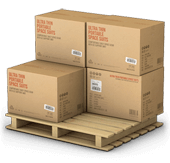Product Description
Safe, reliable, affordable, ‘plug and play’
Low boost, instant boost, no lag
Easy install, 4-5 hours typical install
*4-6 pounds boost on the stock 3.8L
Works and has been tested at all altitudes
Utilizes a modified GM 3.8L Eaton M62 supercharger
Rotor pack and nose drive are easily rebuildable
Retains A/C! No relocation of any engine components, uses stock tensioner pulley
Completely stock EFI settings and function when not in boost
7th injector, 60lbs/hr, provides additional fuel under boost and ‘liquid/chemical’ intercooling effect
Split Second FTC controls boost timing retard and axilliary 7th injector control
FTC is fully laptop programmable
FTC comes with base tune pre-loaded
FTC clamps MAP sensor to prevent CEL’s
FTC comes with our proprietary connectors for true ‘Plug and Play’
When you look at the dyno charts, if you look for peak numbers alone, you are cheating yourself. The peak numbers only occur in a small time window, at exact RPMs. What really matters is the difference in HP and Torque over the RPM range. That is what you feel when you drive. Think about it this way: Would you rather have 50 more HP for a split second, or would you rather have 50 HP throughout most of your RPM range? Just keep that in mind when comparing dyno numbers, so you make an informed decision. If you would like any further explanation or have any questions, just let us know!
The dyno chart below is based on speed to show 1st, 2nd, and 3rd gear runs. Because the vehicle is an automatic, we are unable to force it to stay in gear, and this gives you more of an idea of what the driving experience is like anyway. The two sets of power spikes (around 45 mph and 76 mph) are when the transmission shifted, so ignore those spikes. (You will also notice a downward spike of the supercharged session at 64 mph. That was an anomaly and unfortunately we didn’t notice it at the time to re-run the dyno.)
2007 JK Stock vs 2007 JK Boosted Tech M62 5 lbs











